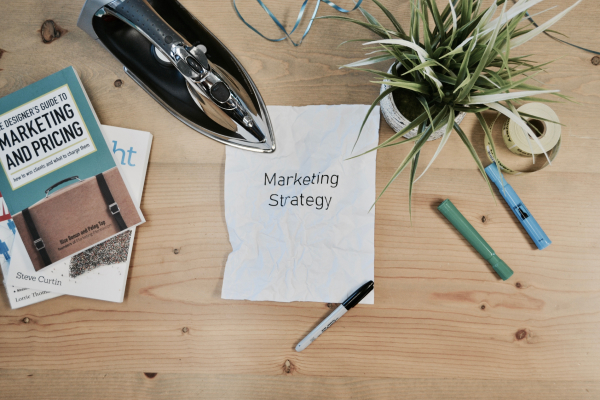Inbound lead generation is an important part of reaching your marketing and sales goals. The more customers you can attract to your brand, the bigger your opportunity to expand your revenue. But simply attracting inbound leads isn’t enough. You also need to reach out to them effectively if you want to earn their business. Lead response times play a huge role in this. But how fast should you reach out to new leads? And what should you say when you do?
Read on to learn how quickly you should be contacting inbound leads.
There’s no such thing as too fast
If you can start contacting your leads faster, then you should get on it – even if you are eclipsing your competitors.
When a new lead shows up on your radar, it’s because they’ve interacted with your brand in some way – through your website, social media accounts, or another channel.
You want to capitalize on the attention the lead is giving you while they’re giving it to you because there’s no guarantee they’ll re-engage – especially if you don’t reach out.
Help your sales consultants contact new inbound leads faster
Here are the best strategies for improving your sales consultants’ lead response times.
Share the importance of lead response times with your team
Maintaining a fast lead response time may not mean all that much to your staff right now – especially if you don’t communicate it.
That’s why it’s important to emphasize lead response times while talking with your team. But if you want to get their buy-in, don’t just tell them they need to hit an arbitrary number and leave it at that. Explain exactly why responding to leads faster is so valuable.
Consider using specialized reps for improved inbound lead response times
Large and mid-size companies can generate thousands of inbound leads each day. If you get a considerable number of these, it may be best to have a small portion of your team specialize in reaching out to new inbound leads.
It can be challenging for a salesperson to find enough time in the day to reach out to every new inbound lead your website generates if they have lots of other things to worry about as well.
But if a salesperson only has contacting new inbound leads to worry about, they can give this job the level of attention it deserves. That should help you reach out to new inbound leads faster and get better results when you do.
Use technology to score inbound leads
Your team’s lead response times could also suffer if they get overwhelmed with their workload and fall behind. And sometimes, you simply don’t have the additional staff members necessary to speed things up.
That’s why it could make sense to start using a system that scores your inbound leads based on how likely they are to convert into a paying customer. Doing this is beneficial because it allows your team to prioritize the highest-value inbound leads first. This ensures your limited time is allocated where it’s best spent.
Track each sales consultant’s average lead response time
There can also be considerable differences in how quickly different sales consultants on your team reach out to the new inbound leads they’re assigned. So track response times on an individual-by-individual basis.
Doing this will also let you know how someone’s performance improves or declines over time. You can reward progress and address drawbacks before they impact your success rate too significantly.

Improving your team’s contact results
Reaching out to new leads quickly is one thing. But you also want to make sure you’re doing so in ways that will help you convert new leads into paying customers. Here are some strategies to make that happen.
Use the right channel
It’s also essential to contact you on the right channel with a new inbound lead. Generally, it’s best to stick with the same channel that the lead reached you on if they’ve explicitly expressed an interest in your company.
For example, if someone filled out an information request form on your website, it would make more sense to send them an email than a text.
The idea here is that your lead has already shown you how they’re most comfortable communicating with your company. So there’s no need to move away from that channel unnecessarily.
Try multiple channels if the first doesn’t work
Sometimes, the first channel you use to contact a lead won’t work. Maybe the email address you have is invalid. Or they won’t pick up the phone because they don’t recognize your number.
When you’ve tried reaching out to a lead via their initial contact method, it’s time to use a second and maybe a third channel. That way, you’re not giving up too early on an inbound lead who may still be interested in doing business with you.
Approach inbound leads with the right message
You could have the fastest response time in the world. But if the actual message you’re sending isn’t up to par, you won’t be able to feed your sales pipeline.
If possible, personalize the messages you send to new inbound leads. You don’t have to go overboard here, but using a bit of contextual information, such as what they were looking at on your website, can go a long way. Research shows that 80% of customers prefer to buy from a brand that offers a tailored experience.
Emphasize follow-ups
Even if you reach out to new inbound leads quickly, you likely won’t convert a high percentage of them on your first contact attempt. Data shows that it takes an average of 8 touches to convert a lead into a paying customer.
That’s why it’s essential to ensure your salespeople know how important it is to follow up with their inbound leads. You may even want to invest in some marketing automation technology that can automatically take care of follow-up emails so that you never have to worry about skipped follow-ups.
Be a source of value, not a salesperson
When you first reach out to a new lead, your first goal should be establishing a relationship with them, not making a sale. People dislike a pushy salesperson. But they value help and assistance where it’s needed. So if you can establish yourself as a source of value from the first point of contact, you’ll be in a much better position to sell to that person in the future.
One of the most effective ways to do this is by sharing content you publish with a new lead. For example, if you notice that a lead has looked at a particular benefit page on your website, send them over a blog post that dives deeper into that benefit.

LeadLander can help you boost your inbound lead response times
One of the most significant sources of new inbound leads for most companies is their website. But it can be tough to reach out to all of the new people who visit your site in a timely matter. You would need to dedicate someone to keeping tabs on this full-time just to keep your response times sharp.
Thankfully, you can save yourself a lot of money without sacrificing lead response times using LeadLander.
LeadLander will send you real-time notifications whenever a new or returning lead visits your website. That way, you can reach out to them instantly without keeping track of this data yourself. It could be all you need to increase your lead response times.

